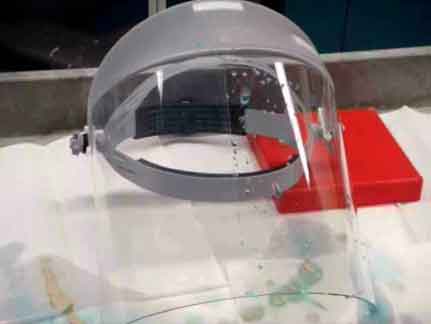
[Image above] Credit: ORNL

Researchers at Oak Ridge National Laboratory have developed a new coating the helps solve soiling problems for solar panels. Credit: ORNL.
Pesky particles are no match for the power of a new “self-cleaning” coating for solar cells.
If left to their own devices, the dust and sand that tends to settle on (or soil) the mirror or photovoltaic surfaces of solar reflectors can reduce reflectivity by up to 50 percent in two weeks. But these sun-blocking contaminates are no longer a problem, thanks to a “low-cost superhydrophobic” coating developed by researchers at Oak Ridge National Laboratory (ORNL).
According to the ORNL website, the lab is producing a more energy- and cost-efficient coating that repels water, viscous liquids, and most solid particles, including the silica, sand, and dust pictured above. Current manual methods use detergents and deionized water to clean solar-cell surfaces, but the new coating lets Mother Nature, by way of wind and rain, do the work.
Unlike other solutions to the soiling problem, ORNL’s coatings—no more than a few hundred nanometers thick—are achieved with typical painting and spraying methods that mix organics and particles. They’re also relatively low-cost, making the superhydrophobic coating all the more super.
The development by ORNL’s Energy and Transportation Science Division, which includes Scott Hunter, Bart Smith, George Polyzos, and Daniel Schaeffer, is sponsored by the Department of Energy’s Energy Efficiency and Renewable Energy SunShot Concentrating Solar Power Program (say that three times fast).
Further exposure and field testing (including utilizing the team’s “superhydrophobicity expertise to develop anti-soiling cool roof coatings, as well as anti-icing and anti-condensation coatings for air conditioning and evaporative cooling applications”) should begin in 2014—so stay tuned for future developments.
Author
Jessica McMathis
CTT Categories
- Energy
- Environment


